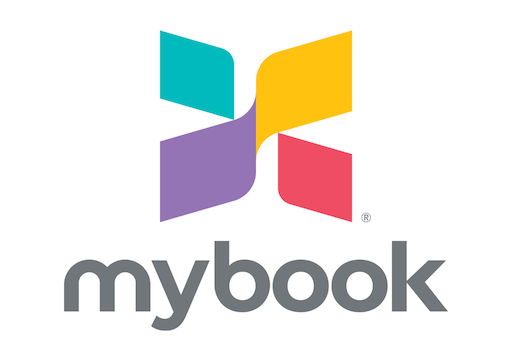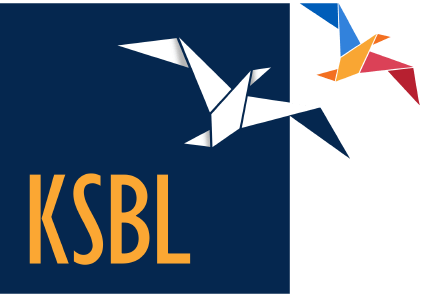Comprehensive HubSpot Marketing Checklist for Success
What is HubSpot?
HubSpot is an all-in-one inbound marketing, sales, and customer service platform designed to help businesses attract, engage, and delight customers. It integrates various tools such as CRM, email marketing, social media management, and analytics, providing a centralized platform for executing and analyzing marketing strategies.
Why HubSpot is Important?
HubSpot is crucial for businesses aiming to streamline their marketing efforts. It facilitates a seamless workflow by bringing together essential tools, fostering collaboration, and providing a holistic view of customer interactions. With its emphasis on inbound methodology, HubSpot helps businesses attract and retain customers through valuable content and personalized engagement.
What are the Limits on HubSpot?
While HubSpot is a robust platform, it may not be suitable for every business. Small businesses with limited budgets might find some of its features expensive. Additionally, businesses operating in highly specialized niches may require additional tools beyond what HubSpot offers.
Is HubSpot Good?
Yes, HubSpot is widely regarded as a powerful and effective marketing platform. Its user-friendly interface, comprehensive set of tools, and commitment to continuous improvement make it a preferred choice for businesses of various sizes. The platform’s ability to adapt to evolving marketing trends ensures its relevance in the dynamic digital landscape.
About the HubSpot Checklist
The HubSpot Marketing Checklist is a comprehensive guide designed to assist businesses in maximizing their use of the platform. Whether you are new to HubSpot or seeking to optimize your current strategy, these checklist points cover essential aspects of successful HubSpot marketing.
Checklist:
1. Set Up Your HubSpot Account:
Create and configure your HubSpot account, ensuring accurate business information and preferences.
2. Define Buyer Personas:
Identify and create detailed buyer personas to tailor your marketing strategies to the specific needs and preferences of your target audience.
3. Implement HubSpot CRM:
Integrate HubSpot CRM to manage and organize customer data effectively, streamlining communication and improving customer relationships.
4. Develop a Content Strategy:
Create a content plan aligned with your buyer personas, focusing on blog posts, ebooks, and other resources to attract and engage your audience.
5. Utilize Email Marketing:
Leverage HubSpot’s email marketing tools for creating and automating campaigns, nurturing leads, and maintaining consistent communication.
6. Optimize Landing Pages:
Design and optimize landing pages to capture leads and encourage conversions. Use A/B testing to refine page elements for maximum effectiveness.
7. Social Media Management:
Schedule and manage social media posts directly from HubSpot, ensuring consistent and strategic social media presence.
8. Implement Marketing Automation:
Set up automated workflows to streamline repetitive tasks, nurture leads, and guide prospects through the sales funnel.
9. Monitor Analytics:
Regularly review HubSpot analytics to track the performance of your marketing efforts. Analyze data to make informed decisions and optimize campaigns.
10. Conduct SEO Audits:
Perform regular SEO audits using HubSpot’s tools to identify and address opportunities for improving search engine visibility.
11. Create Smart CTAs:
Implement Smart CTAs (Call-to-Actions) to deliver personalized content to users based on their previous interactions with your website.
12. Optimize Lead Scoring:
Refine your lead scoring system to prioritize and focus on leads with the highest potential for conversion.
13. Utilize HubSpot Ads:
Integrate and manage your paid advertising efforts through HubSpot Ads, ensuring a cohesive approach to your overall marketing strategy.
14. Develop Webinars and Events:
Leverage HubSpot for organizing webinars and events, integrating registration and engagement seamlessly.
15. Implement HubSpot Sales Hub:
If applicable, explore and implement features from HubSpot’s Sales Hub for a unified approach to marketing and sales efforts.
16. Personalize Content:
Use personalization features to tailor content to specific segments of your audience, increasing relevance and engagement.
17. Mobile Optimization:
Ensure your content and campaigns are optimized for mobile devices to reach users across various platforms seamlessly.
18. Monitor Competitor Activity:
Use HubSpot’s tools to track and analyze competitor activities, gaining insights for refining your own marketing strategies.
19. Stay Updated with HubSpot Academy:
Regularly participate in HubSpot Academy courses to stay informed about new features and best practices for maximizing the platform’s capabilities.
20. Seek Customer Feedback:
Encourage and collect feedback from your customers using HubSpot’s survey and feedback tools. Use insights to improve your products and services.
21. Community Engagement:
Participate in HubSpot communities and forums to connect with other users, share experiences, and gain additional insights into best practices.
I tried my best to provide the most valuable HubSpot checklist. If you want another checklist, or want it in the excel or word format then let me know. I’ll try to provide that to you.
Twitch Marketing Checklist to Grow your Brand
1. What is Twitch
Twitch is a live streaming platform primarily used for broadcasting video game content, although it has expanded to include various categories like music, art, and IRL (In Real Life) streaming. Launched in 2011, it has grown into a global community where millions of users engage through live chats, supporting their favorite streamers through subscriptions, donations, and Bits.
2. Why Twitch is Important
Twitch is crucial for content creators and businesses looking to connect with a diverse and engaged audience. It provides an interactive space for real-time communication, fostering a sense of community and loyalty among viewers. With over 140 million unique monthly viewers, Twitch offers unparalleled opportunities for marketing and brand exposure.
3. What are the Limits on Twitch
While Twitch is a powerful platform, it comes with some limitations. The primary focus on gaming content might limit non-gaming streams’ discoverability. Additionally, strict guidelines must be followed to maintain a channel’s integrity, and understanding these rules is essential to avoid potential bans or restrictions.
4. Is Twitch Good?
Yes, Twitch is an excellent platform for marketing, especially for businesses targeting a younger demographic. The interactive nature of live streaming creates a unique environment for building brand awareness, fostering audience engagement, and showcasing products or services.
5. About the Twitch Checklist
The Twitch Marketing Checklist serves as a comprehensive guide to help content creators and businesses maximize their impact on the platform. Whether you’re a seasoned streamer or new to Twitch, these checklist points cover essential aspects of building and maintaining a successful presence.
6. Here’s the Checklist.
If you want even more detailed checklist or something in the word/excel format, then let me know, I will post it here.
Here you go:
1 Define Your Brand:
Create a clear and consistent brand identity for your Twitch channel, including a memorable username, profile picture, and banner. Ensure that they reflect your content and appeal to your target audience.
2 Optimize Your Profile:
Complete your Twitch profile with relevant information, including a catchy bio, links to social media, and a schedule for your streams. This enhances discoverability and provides viewers with a comprehensive overview of your channel.
3 Choose the Right Games or Categories:
Select games or categories that align with your content and target audience. Research trending games, news, topics and use relevant tags to increase visibility during searches.
4 Invest in Quality Equipment:
Ensure your stream has good video and audio quality. Invest in a decent webcam, microphone, and lighting to enhance the overall viewing experience.
5 Develop a Content Strategy:
Plan your content ahead of time, considering your audience’s preferences. Create a consistent streaming schedule to build anticipation and attract regular viewers.
6 Interact with Your Audience:
Engage with your viewers through live chat. Respond to comments, ask questions, and build a sense of community. Consider using chat overlays and alerts for interactions.
7 Utilize Social Media:
Promote your Twitch channel on other social media platforms to reach a broader audience. Share highlights, behind-the-scenes content, and updates to keep your followers informed.
8 Collaborate with Other Streamers:
Networking with other streamers can expand your reach. Collaborate on joint streams or participate in community events to cross-promote and gain new followers.
9 Offer Incentives for Subscriptions:
Encourage viewers to subscribe by providing unique perks such as emotes, badges, and exclusive content. Run subscriber-only giveaways or Q&A sessions to show appreciation.
10 Leverage Twitch Analytics:
Regularly review Twitch analytics to understand your audience, track channel performance, and identify areas for improvement. Use this data to refine your content strategy.
11 Run Contests and Giveaways:
Organize giveaways or contests to attract new viewers and reward loyal followers. Ensure that the rules comply with Twitch guidelines and promote them on and off the platform.
12 Enable Channel Points and Loyalty Rewards:
Activate Channel Points to encourage viewer engagement and loyalty. Customize rewards such as shoutouts, emote unlocks, or special interactions based on accumulated points.
13 Optimize Stream Titles and Thumbnails:
Craft compelling titles and design eye-catching thumbnails to entice users to click on your stream. Use clear, concise language and incorporate relevant keywords for discoverability.
14 Stay Consistent:
Consistency is key on Twitch. Stick to your streaming schedule, maintain a consistent tone, and deliver content that aligns with your brand and audience expectations.
15 Monitor Chat Moderation:
Implement effective chat moderation to ensure a positive and inclusive community. Set clear rules and enforce them consistently to create a welcoming environment.
16 Stay Informed about Twitch Policies:
Regularly check Twitch’s community guidelines and terms of service to stay informed about any updates or changes. Adhere to these policies to avoid potential penalties or bans.
17 Utilize Twitch Prime Benefits:
Encourage viewers to connect their Amazon Prime accounts with Twitch for Twitch Prime benefits, which include a free monthly subscription to a channel of their choice.
18 Promote Merchandise:
If applicable, promote and sell merchandise related to your brand or content. Use Twitch extensions or link directly to your online store during streams.
19 Monitor Stream Performance:
Keep an eye on stream health and performance metrics. Address technical issues promptly and ensure a smooth viewing experience for your audience.
20 Seek Feedback and Adapt:
Request feedback from your audience and fellow streamers. Use constructive criticism to adapt and improve your content, ensuring continuous growth on Twitch.
Components of a great Sales page
Sales page is one of the most important part of your overall sales strategy. A sales page is a point where user converts in customer. If you fail at this, it means all your traffic acquisition went in vain.
That’s why you need to know how to create a best sales page that every person that lands on your web page feels they are missing the opportunity that is hard to come by.
I will go into each component and discuss how you can improve your sales page to covert maximum users into customers.
Let’s first look at the most critical components:
- Short name
- Strong 1 Liner
- Strong 2 liners. Not more than 2 lines.
- A list of why choose you
- FOMO
- Testimonials
- Product video
- Free sample
- Tell a story
Let me give you some samples according to each industry.
- CV
Suppose if your product is selling a CV, how will you go about getting as much customers, as many sales, without spending big on ads? without breaking the budget?
First, let’s talk about what the business is.
Business outline: You create custom CVs for the people who are not pro at it. Regardless of skillset, industry and job title people want. You will make CVs for them.
It’s possible. Let me show you how.
First, understand the following:
A. Customer pain points
B. Amount Customer willing to spend (Customer budget)
C. Time customer have
D. Best format the customer
E. Any post-sale help customer want
F. What brings satisfaction to the customer.
G. Questionnaire (What will you need from customer)
Once you know the above from A to G, only then you can craft an eloquent message to convince to buy from you.
A. Customer Pain Points:
In our scenario, customer have the following pain points.
- Don’t know how to make a CV
- Don’t know which format of CV to use
- Don’t know why they are not able to get a job
- Apply on jobs to no avail
- Doesn’t get interview calls.
- Have less or no experience.
- Don’t know where to submit CV.
- Don’t know the cover letter to use.
- Don’t know who is the decision maker to submit CV to.
B. Customer budget:
Following can tell you how much customer is willing to spend.
- Avg. course price
- Competitor price
- Your hourly rate
- Time you will take to make 1 CV
Avg. course price to my calculation is $25, considering all the courses from cheapest to expensive available on the internet.
Competitors are selling CV service from $4 to $150. Lowest in PKR is 3000 ($11), and expensive is 13000($50).
Your hourly rate is $50
You take 50 minutes to create 1 CV.
You can say that you will charge $55 for each CV along with cover letter, thank you note and total of 2 variations and guidebook. You can charge $20 for CV. Remember, you will start writing CVs faster so it will reduce your overall completion time.
C. Time customer have
Most applicants want to start applying on the jobs rightaway. With this assumption you can say that they don’t have more than 48 hours so you should try to provide them with the goods within 48 hours.
D. Best format for the customer
Customer doesn’t know which format is the best. This is your responsibility to tell them. Best is create some articles around the best formats to get you some traffic. Once customers buy from you, you can send them the CV.
Tell me which message is more actionable, example 1 or 2?
- I make CVs so you get a job
- Get powerful CV from me to get the job.
Definitely, example 2 is more action oriented. It has the word powerful in it. You can expand on this by writing more examples and complete your sales page.
How to make social media calendar for restaurant?
If you want to make a social media calendar for a restaurant, first find what you want to include and what not in your calendar. Only after that can you make a calendar.
I will break this article into 3 sections
i) pieces of puzzle
ii) what you need or not
iii) social media calendar template
1) Pieces of Puzzle
Let me give you a small list.
- Deals
- Menu
- Pictures
- Videos
- Testimonials
- Festivals
- Holidays
- Quiz
- Quote of the day
- Anything else you want to add
First, decide how often you want to post on social media and what you want to add.
Deals: If you have a deal every week then it means once a week, or another frequency.
Menu: Menu is something you want sticky on your Facebook, Twitter or other social media. You can also pick out One Menu Item each week and repost it with some saucy caption.
Pictures: What about posting pictures of your restaurant or some cuisine?
Videos: You can merge it with festivals, holidays, cuisine, restaurant atmosphere and post it.
Testimonials: Yes, either screenshot from GMB, or ask your customer to leave a feedback then share it with graphics if possible.
Festivals and Holidays: There are days and weeks that are important, such as Christmas, Black Friday etc where you can promote deals or just say Happy {enter day name} to keep social media account buzzing.
Quiz: You can run small quizzes like ‘what’s our signature dish? answer and one of the winner will get free big meal’. Think about ideas and then run some interesting quizzes to generate some buzz word for your restaurant.
Quote of the day: Shortlist some cool or interesting quotes from chefs or even philosophers that resonate with your values or theme then share it. The reason to share these quotes in some graphics is it shows you are active, and people share the quotes they like; so this way your brand will get new visitors.
2) What you need or don’t need?
If you are a small restaurant with 1 person doing pretty much everything then you wouldn’t need highly active (or posting everyday) but rather only need menu, signature dishes, or deal of week/month.
If you are a bigger restaurant, probably with multiple locations then you do need more activity on your social media.
3) There’s a template I use which doesn’t contain glitter and shine but it does work well because it contains all the necessary items that any social media calendar needs.
It contains platform such as facebook, twitter (enter yourself), type, status (such as published or not) and response, you can even define the month and date. So, it pretty much does all the stuff.
You can download it for free here. https://docs.google.com/spreadsheets/d/1pYD68lei59bIMdh1m42R5adv6wdt5EVyF9V6v1HnfLA/edit?usp=sharing
20 Most common restaurant marketing mistakes
If you are a restaurant you should stay away from these most common restaurant mistakes. You can always learn something new and avoid these mistakes.
Avoiding these mistakes will get you more customers, and your strategy will be long term instead of short term benefits you will get long term benefits.
Let me show you some of the most common mistakes so you can correct the path.
1.No Clear Strategy:
It is very common and really any one can make the mistake of Not having a clear marketing strategy in place, afterall as a restaurant owner you might want to focus on other aspects of your restaurant business instead of focusing on marketing and chances are you are not pro at it.
But, the truth is all restaurants need marketing strategy. What about new businesses that are jumping in this line of business? What about keep getting the customers returning back? If you have a clear restaurant marketing strategy then it means you will keep getting returning customers ensuring steady income stream.
Therefore, create a marketing plan, it’s not necessary it has to be big, it can be just 1 page, but write down your marketing strategy and then stick to it unless you feel like changing it.
Read another article I wrote about AIDA Restaurant SEO, it will help you out big time.
So, there are multiple parts in Restaurant marketing, mainly:
-
- Direct marketing
- Platform marketing
- SEO
- Social media
- WhatsApp (or other such apps)
- Brochure, pamphlets.
- Bill board
- Radio
- Ads
- There can be more, if you need more help let me know if I should write about it or contact me if you need more help.
2.Narrow Focus on Offline marketing
Yes, offline marketing is good, but you know everyone lives in a digital world so it’s much better to spare some bucks for your online marketing (digital marketing). If you spend $1000/month offline then better start catching up online also and spend 30 to 50% on digital.
Now, it doesn’t have to be huge amount, but you got to learn how to spend smartly and wisely on the internet for the biggest outcome.
When you are spending online you need to realize what’s the best you can do. Is it brand awareness you are looking for or transactional (meaning paying customer in restaurant aspect). If you are looking for brand awareness then you will opt for online display ads. If you are looking for transactions meaning paying customers then you will opt for search ads with keywords ‘fast thai food delivery’ or whatever that fits your restaurant offers
Again, offline is important, but not all the time especially when avg. person spends 6+ hours on devices like phone, laptop, tablet.
3.Ignoring customer feedback and reviews.
Word of mouth marketing is the best type of marketing so you will never go wrong with customers speaking about you and put you among other future customers in the best language possible.
So, always take into consideration the customer feedback.
If you don’t ask your customers about their feedback explicitly they will go to Google My Business, Facebook Groups, etc and leave it themselves. So, the best strategy is ask for their experience when they dine-in or even takeaway and politely ask if you like the service/food would you like to leave a rating or review about us on GMB (Google My Business) or Facebook group etc.
4.Not having a strong brand identity.
Just because you are not as big as Mc Donald’s doesn’t mean you don’t have to take your identity or branding seriously.
Remember, branding doesn’t have to be expensive, you can integrate it with your everyday merchandise. Starting from but not limited to your logo, your packaging, your restaurant theme, main theme colours, brochure, employee uniforms. Just vector logo with color scheme and then putting it on uniforms, packaging, brochures, logo will create a professional perception among your customers.
Your identity is not just your name, but also what you call your biggest cuisine or people’s favorite drink.
Now, branding is not limited to aesthetics only, you can even consider how politely or graciously you speak to your customers in your branding.
So, knowing what is branding and how you do your own branding will take your restaurant brand long way.
5.Inconsistent branding across all platforms.
Like mentioned in point 4, make sure your logo, colours, words, cuisine names, uniforms are consistent. Consistency develops a feeling of satisfaction and comfort in the minds of your customeres and make the feel like coming back. So, yes, make sure your branding is consistent.
6. Overcomplicating your menu.
If you have noticed, there are 2 type of restaurant. Restaurant 1 with literally small menu with 2 or 3 items but huge line of customers, on other hand there are restaurant with huge menu literally 100+ items and much fewer customers then example restaurant 1.
So, you need to decide you want to overcomplicate the menu with long list of items or few specialist items that people mainly visit your restaurant to have.
It also affects your bottom line like how much money will you make at the end of day or month. This decision impacts your supplies, warehouse, perishable items, chefs available etc.
7.Not updating your menu regularly.
It’s simple. Every week introduce 1 or 2 new dishes depending on season or festivals. You don’t need to print new menus, Just put on the board, make simple post on Facebook, GMB and people will know you are bringing something new that’s their favorite or not easily found and they would want to spend their money at your restaurant.
8.Failing to create a loyalty program.
There are multiple ways to create loyalty program. You can engage some company (DM me) or just do it yourself without extra cost. Just print simple card or give secret code or number to your customers with which they can redeem extra meal or discounts.
Loyalty programs ensure that you keep getting customers with consistency.
If you are a restaurant with decent size with good food but not as many customers to fill the restaurant or empty the inventory every day then you should look into having loyalty program.
9.Not having a mobile-friendly website.
Not saying you should have an app, but at least you should have a website, there are lot of free and paid options that shouldn’t cost you more than $4 every month to have a fast mobile friendly website. There is Power App, bubble.io, WebFlow, or even more simple apps, just look around otherwise I will share them in future.
10.Not optimizing for search engines.
You have to optimize your website, social media, platforms for search engines. Google search, bing search and other platforms are the best source of regular traffic and you should have a proper multi-channel strategy to get traffic. SEO is one of those puzzles from your multiple channel strategy.
11.Failing to leverage social media platforms.
Without saying you post every day, at least keep your social media active. This way customers will know you care about the business and still have that positive energy that people seek. Doesn’t mean you spend ton of money but at least post your specials, deals, discounts. loyalty program, new decoration, wish new year, happy {holiday name} etc.
12.Not responding to comments and messages on social media.
Sometimes there might be bad or uninvited comments, you can just leave those illicit comments but always respond to meaningful and legit comments.
13. Not offering any specials or promotions.
Always have something to show that differentiates your business from other businesses (competitors).
14. Not collecting customer data for email marketing, or WhatsApp.
Be polite and ask your customers (especially when you think they enjoy their meal) if they enjoy their meal will they be happy if they receive a promotion once a month or special occasions through their email, SMS or WhatsApp.
15.Not segmenting your data list.
Goes without saying that how important it is to protect customer privacy. Now, when this is settled, let me tell you it’s a great practice if you can manage to segment your customer data into categories like visit often, placed big orders, conducts birthdays – this helps you to create more suitable prices, plans and deals that you know they will like and will gladly accept the offer as it comes.
16.Ignoring the power of influencer marketing.
Especially, if you are a new restaurant looking for buzz then influencers can be a cost-effective way to set your foot between the competition all around you. Make sure they have the following from your target audience, then negotiate some deal with them that will get you the walk-in customers or take-aways that you want.
17.Neglecting local marketing opportunities.
Don’t neglect local marketing opportunities such as giving your business card, or brochure for take-away or deliveries. Getting that cheap billboard that sees the most traffic during the day. Look for such local marketing opportunities. Sometimes it can come in a variety of creative ways.
18.Failing to train staff on marketing initiatives.
It’s extremely critical, actually it’s the most vital point to teach your staff how to deal with clients as well as how they can upsell or keep future customers coming in.
Manners, behaving, speaking, presesnting, dealing with difficult situations – teach your staff.
19.Not tracking your marketing efforts to measure success and adjust strategies accordingly.
This is a missing piece of puzzle that very few people can do well. Whether it’s Google analytics, instagram insights, or platform like ubereats, food panda, insights can give you a meaningful directions on improving your business and sales.
20.Doing something phenomenal
What do you think about an offer that is too excited for any one to believe. Let me give you some examples: i) biggest burger
ii) spiciest pizza
iii) if you are below this weight (put weight machine) then you get 2 meals (specific cuisines) free.
You see, that’s how easy it is to generate a buzz.
If you want to work on your marketing campaign, then drop me email at ak@mabdullahkhan.com or WhatsApp at +92 340 2589990













